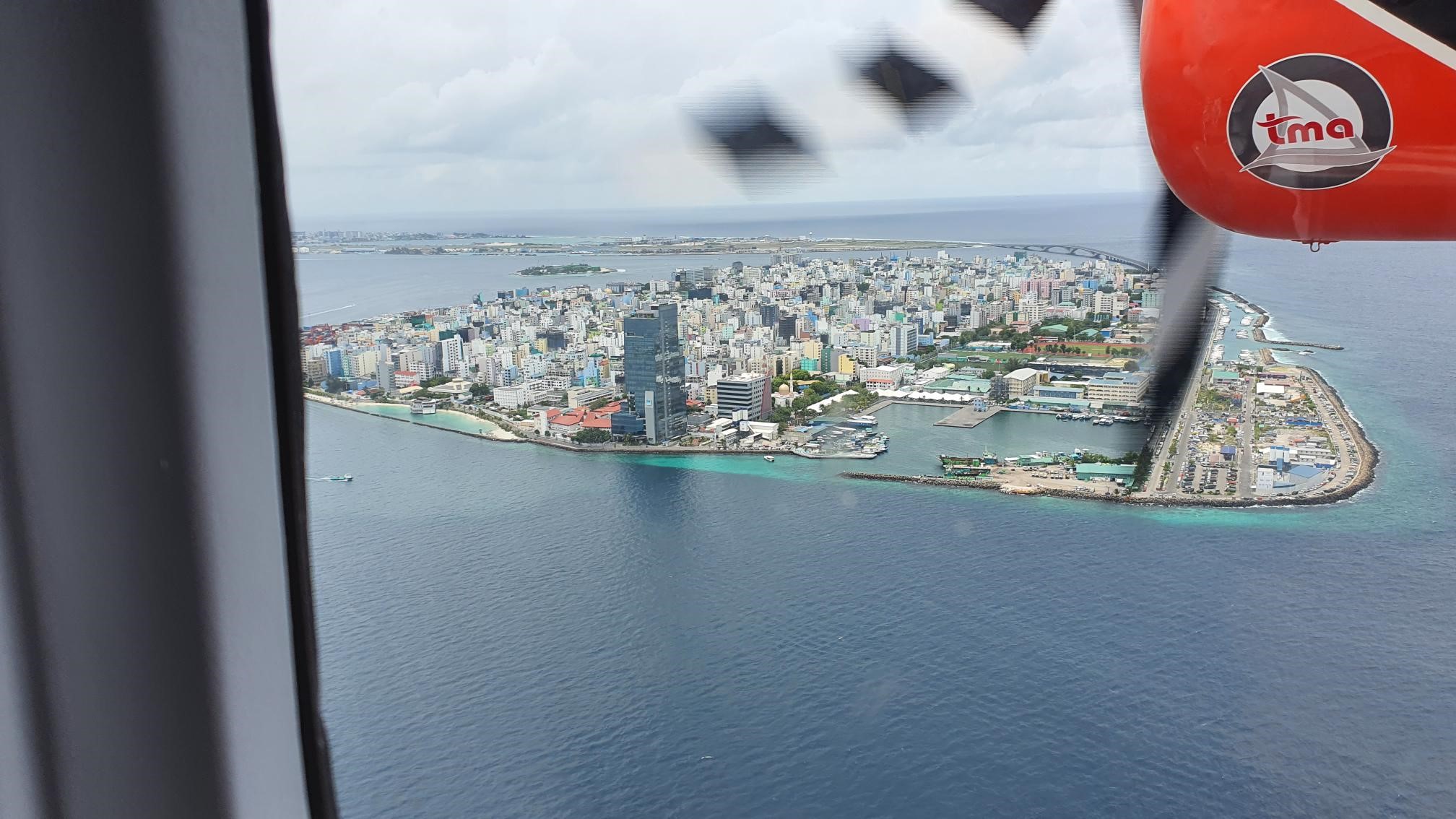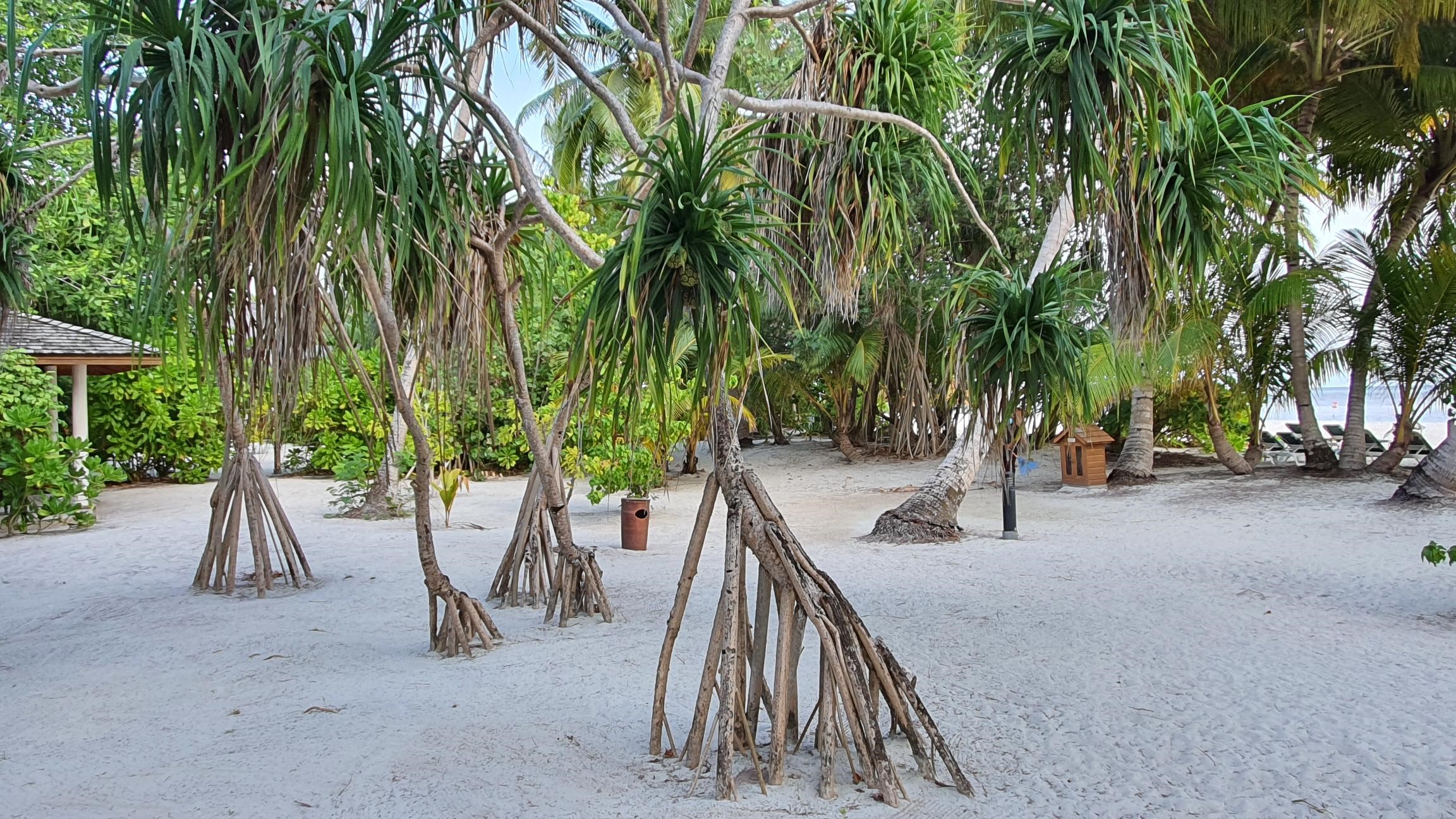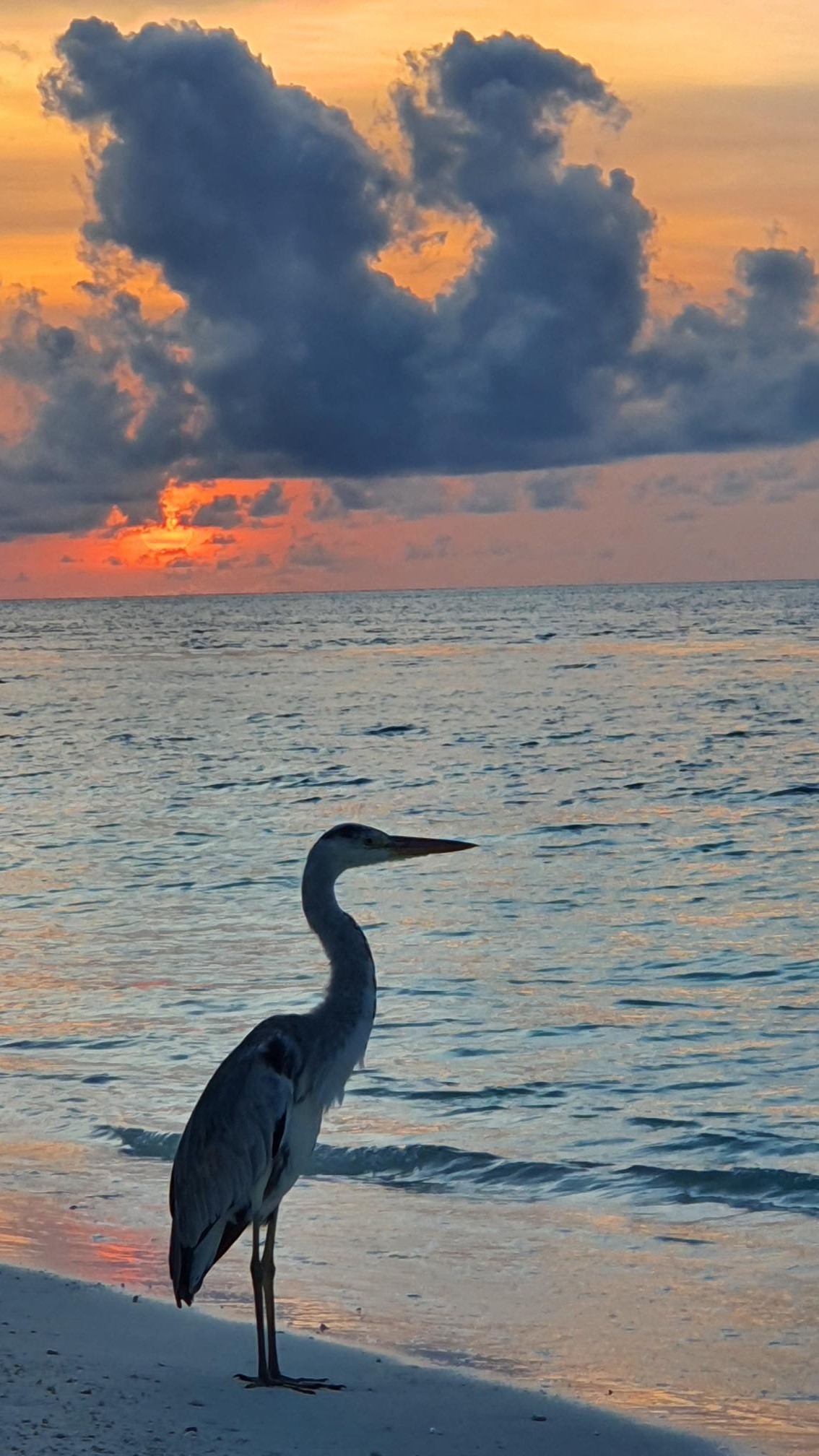Maldives
Eid al Adha follows the annual Hajj pilgrimage.
With restrictions meaning that the Hajj would again be restricted in numbers,
the metro in Makkah was not required for use in 2021, and as a consequence I
found myself with a week’s holidays. My preference would have been a week at
home, it being over 6 months since I had been there. But with the restrictions
in place at the time, that would have meant 14 days quarantine upon entering
the UK, so that was ruled out. With
double vaccinations, both Elaine and I could leave and re-enter KSA without penalty
as long as we didn’t visit or transit a country that was on the Saudi’s banned
list. With the temperatures in Riyadh being in the high 40’s we were looking
for somewhere cooler, much cooler. Greece and Cyprus were considered, but
flights weren’t amenable, with nothing direct, and most of the flight options
going through Turkey or Egypt, both of which were on the KSA red list. So we
settled on the Maldives, which in July, although just north of the equator has
a year-round climate in the low 30’s. Emirates Holidays offered an attractive
deal with flights (via DXB) and hotel combination that suited our dates. So we
booked that via the internet. Unbelievably, less than an hour after booking, it
was announced that KSA had added the UAE to its red list, and cancelled all
flights to and from that country. Emirates refused to confirm that the flights
from Riyadh to Dubai wouldn’t operate until 5 days before we were due to
travel, and so we could not modify the holiday without big penalties. However,
once Emirates ‘fessed up, they wouldn’t change the flights to another operator so
offered us a 100% refund, but stated that the money would take up to 45 days to
be processed. Fortunately there was enough headroom on our credit cards to
allow us to make alternative bookings. We were able to book the same hotel
directly, and make independent flight bookings. As we were now booking at short
notice, the flights were more expensive, but we saved a little on the hotel cost
thus making the change cost-neutral. Flights were booked outwards on the
Thursday night 15th, travelling via Bahrain using Gulf Air, and
returning during the day on Friday 23rd directly from Malé to Riyadh with Saudia. This fitted in nicely with our expected leave
dates, which would be made up of 4 public holidays and 1 annual leave day, thus
maximising my time off.
Fortunately nothing else went awry before we travelled, and we set off, having deposited the dog in kennels in Riyadh. One of the features of inter-island travel in the Maldives is the use of seaplanes, which are used for all tourist transfers apart from those to the islands nearest to the international airport. This was a new experience for us, flying in these tiny craft that took 12 passengers, plus 2 pilots and a baggage / docking man. We arrived at our chosen resort on an island in the South Ari atoll.
 The seaplane
deposited us and our bags onto a raft which was moored 100m off the island and
the last leg was by the resort’s shuttle boat.
The seaplane
deposited us and our bags onto a raft which was moored 100m off the island and
the last leg was by the resort’s shuttle boat.
This was my first proper visit to the Maldives
(a plane touchdown there on a journey from Sri Lanka to UAE in 2018 certainly
doesn’t count as a visit), and my first visit to anywhere that does not have a
substantial land mass. The Maldives are to be found in the Laccadivian Sea, an
offshoot of the Indian Ocean. The country is made up of 25 atolls (a word used
by early explorers in the archipelago – Pyrard, Moresby and Charles Darwin to
define the coral reef and island formations found there). The atolls were
formed by volcanic activity under the ocean with the volcano rims rising above
the ocean millions of years ago. However over time the land masses subsided very
slowly, and the coral reefs which had established themselves in the seas around
the land kept regenerating to stay at sea level as the land subsided, with the
result that today the original land lies well below the surface and the coral
is all that is visible. Some coral areas formed new islands which infilled with
sand and became habitable. Nowadays the Maldives are formed by c1,200 islands.
The number is imprecise as every year some are washed away or drowned and
others are formed. Less than 200 of these are inhabited, and there are also
some used for agriculture. The total land mass is noted as less than 160 square
km, occupying a chain that stretches for 900km north to south and up to 125km
wide. I make that less than 1/500th of the country area actually
being land. The population (2014 census) was around the 500,000 mark. 
Malé from the air
The capital Malé houses most of the permanent population, and consequently is one of the most densely populated cities on earth. Of the inhabited islands, over half are now holiday resorts and contribute over 80% of the country’s economy. This all sounds idyllic, however the dark clouds of global warming and sea level rises are threatening the country’s very existence, with predictions suggesting the islands could disappear by as soon as 2100. The 2004 tsunami also had a significant effect on the country with over 100 deaths and the loss of 12 islands. Tsunamis remain a constant threat and our resort had an early warning system in place for that eventuality.
There’s no doubt that the islands are picturesque, and the palm trees provide iconic backdrops to many tourist pictures. Our island though had a very different species growing from the coral sands, these were of the Pandanus species, and the helpful resort staff said that the local name was Maakashikeyo, or Fragrant Screw Pine. The notable feature was the aerial root system, it seemed to me that they had been planted in mid air and roots had grown down into the ground. I wonder if there is any time-lapse photography of them growing?

Aerial root trees
The Maldives are also an important stop-off point for migratory birds. We didn't see a big variety of birdlife, but regular visitors to our beach and freshwater swimming pool were a family of grey herons. They seemed to be unfazed by the larger bipeds looking to take souvenir pictures.
"That way to Makkah"
The Maldives is a Muslim country, however the tourist islands have permissions to serve alcohol and pork products, these are not available to the locals. The Maldivians know the value of keeping the tourist happy. The island that we visited specialised, like many others, on water activities. There was a busy and well-staffed diving centre and I enrolled on a beginners course to learn scuba diving. There was an extensive theory element to the course and a written and practical exam. This included going through all the foreseeable emergency situations, including air blockages and losing air, as well as practical matters such as underwater sign language and navigation. There were a number of similarities to the breathing apparatus courses I did when I was in Kent Fire & Rescue Service some 20 years ago.

Dive school
A highlight for us was an all-day ocean cruise to the open water outside our atoll, and opportunities for snorkel swimming with manta rays, whale sharks and turtles. And on our sail back to our island, we were joined by a pod of 5 dolphins who entertained themselves (and the people on the boat too) for half an hour by riding our bow waves. Definitely one for the memory bank.

Our yacht

Our dolphins.
